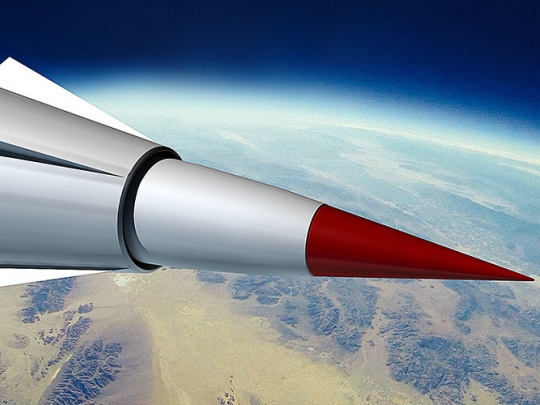China successfully tests nuclear-capable hypersonic missile – Pentagon sources

China successfully carried out a flight test of its state-of-the-art high-speed maneuvering warhead last week, sources in the Pentagon said. The trial took place just days after a hypersonic glider was reportedly tested by Russia.
The DF-ZF hypersonic glide vehicle was launch on Friday by a ballistic missile fired from the Wuzhai site in central China, unnamed US military officials told the Washington Free Beacon website.
The maneuvering glider was tracked by American satellites as it was traveling at the speed of several thousand kilometers per hour along the edge of the atmosphere towards an impact area in the west of the country, the sources said.
It was the seventh air trial of the Chinese glide vehicle, with six previous tests conducted in 2014 and 2015 also having been successful.
According to the Washington Free Beacon, US intelligence fears that Beijing may use DF-ZF (formerly codenamed WU-14 by the Pentagon), capable of reaching speeds of over 11,000 kilometers per hour, to deliver nuclear weapons bypassing even the most complex of missile defense systems.
The glider could also become a part of a conventional strategic strike weapon that would enable China to hit targets anywhere in the world within just an hour.
Glide vehicles are lifted to the high upper atmosphere by ballistic missiles and then glide at speeds five times faster than the speed of sound.
Pentagon spokesman, Cmdr. Bill Urban, declined to comment on the fresh Chinese maneuvering warhead test, but stressed that the US military “do monitor Chinese military modernization carefully.”
Chairman of the House Armed Services Subcommittee on Seapower, Randy Forbes, told the Washington Free Beacon that he’s worried by the Chinese tests.
“China’s repeated test of a hypersonic glide vehicle demonstrates Beijing is committed to upending both the conventional military and nuclear balance, with grave implications for the stability of Asia,” Forbes said.
On April 22, Russian Strategic Missile Forces conducted an intercontinental ballistic missile (ICBM) launch, testing a hypersonic cruise missile.
An Interfax source said that the launch from a missile deployment area in the Orenburg Region on the border with Kazakhstan was a success.
The Russian Defense Ministry declined to comment on reports about what is believed to be Moscow’s second hypersonic glider test.
In mid-April, the director of the Pentagon’s Missile Defense Agency, James Syring, told the US Senate that two countries, the names of which he didn’t reveal, pose a growing hypersonic missile threat.
However, the Washington Free Beacon warns that the Pentagon “is doing little to deal with the emerging hypersonic missile threat.”
The Missile Defense Agency has not funded any direct programs to counter hypersonic arms in its 2017 fiscal budget of $7.5 billion.
This year, it asked for funds to work on a low-powered laser to target hypersonic missiles, but its tests will only start in 2021 when China’s DF-ZF will likely already be in service, the website stressed.
- Source : RT















